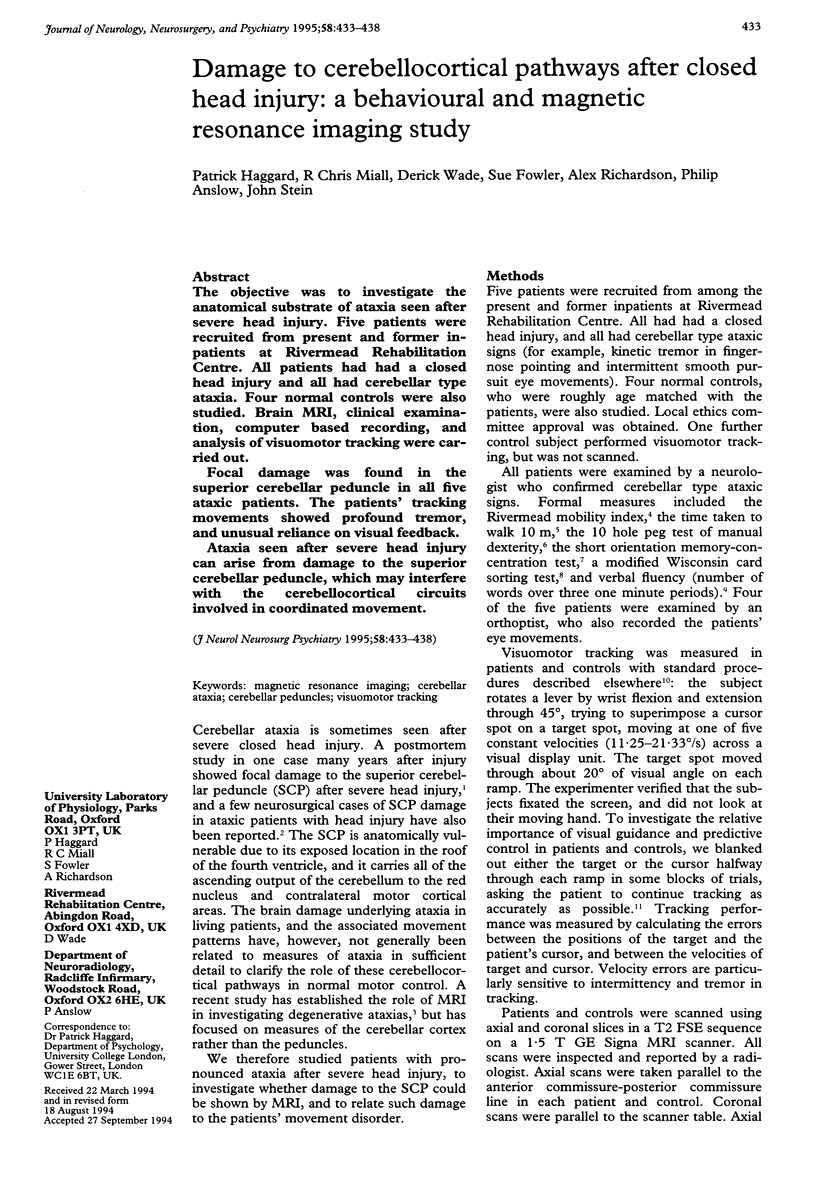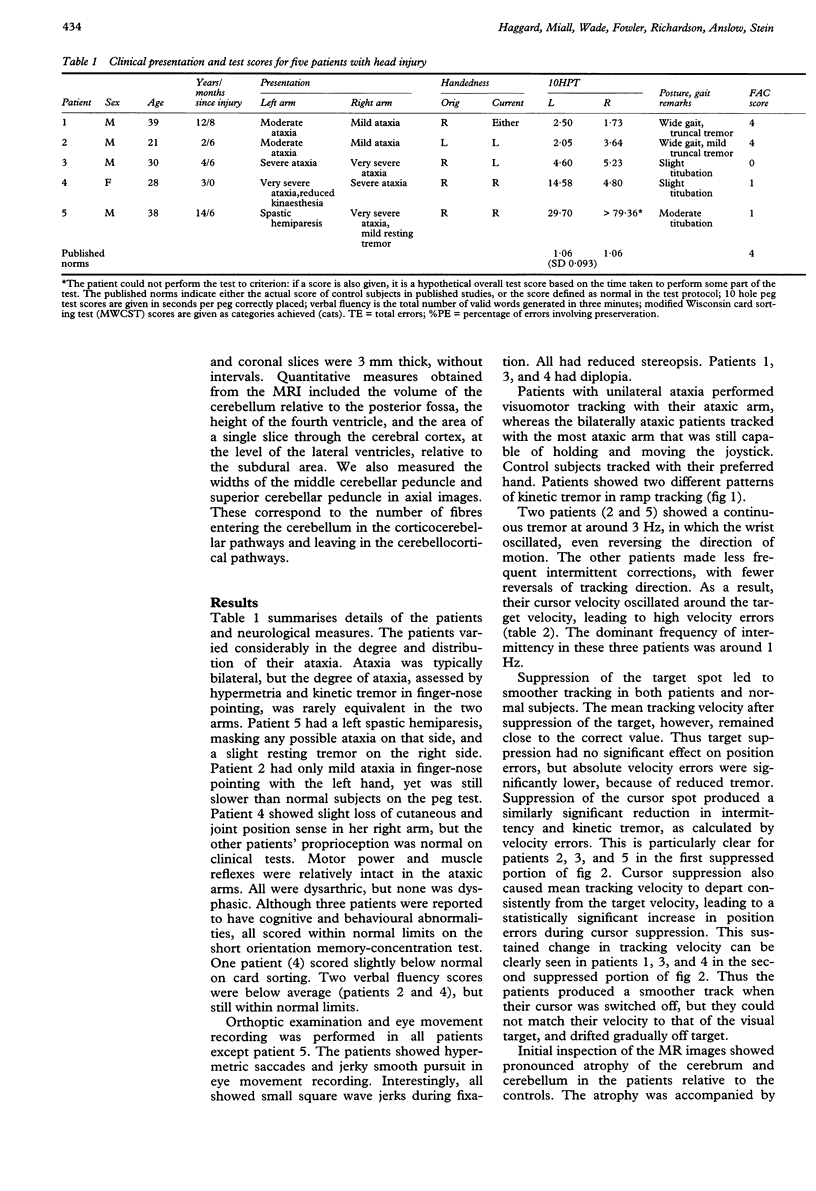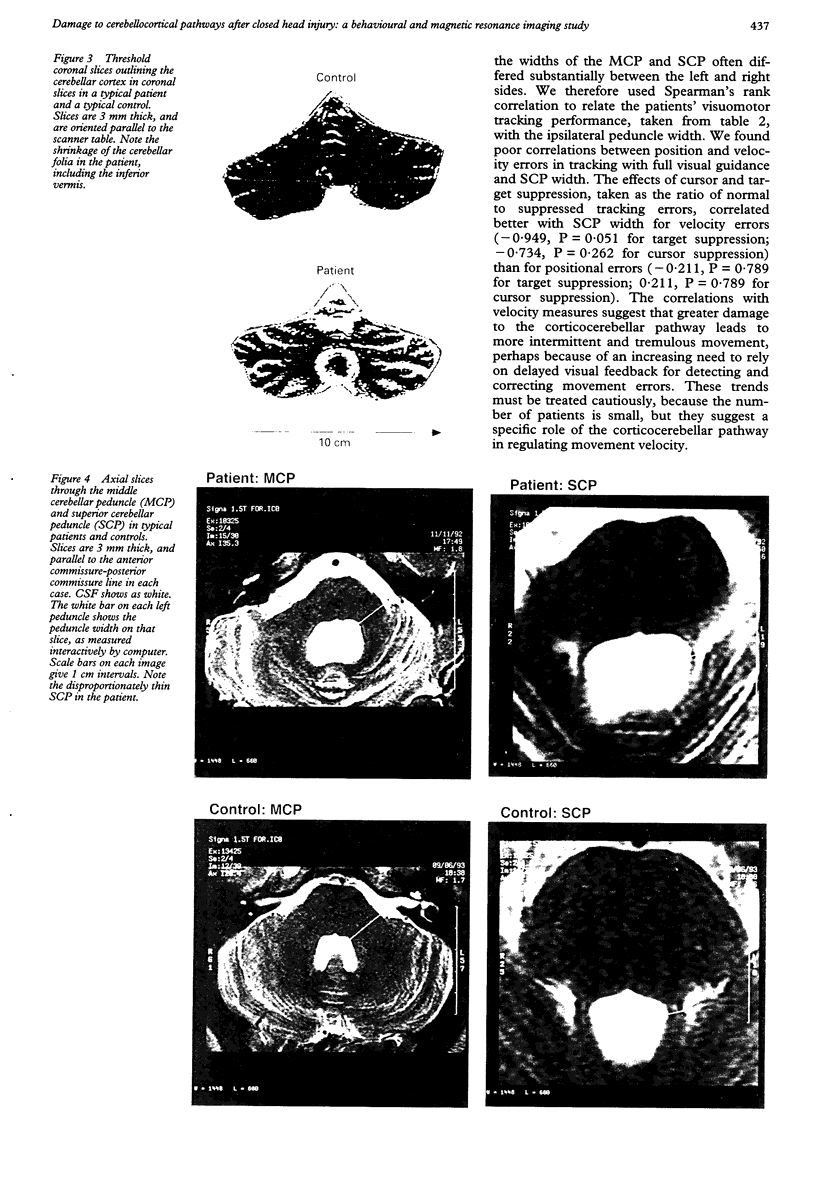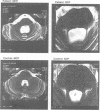Abstract
The objective was to investigate the anatomical substrate of ataxia seen after severe head injury. Five patients were recruited from present and former inpatients at Rivermead Rehabilitation Centre. All patients had had a closed head injury and all had cerebellar type ataxia. Four normal controls were also studied. Brain MRI, clinical examination, computer based recording, and analysis of visuomotor tracking were carried out. Focal damage was found in the superior cerebellar peduncle in all five ataxic patients. The patients' tracking movements showed profound tremor, and unusual reliance on visual feedback. Ataxia seen after severe head injury can arise from damage to the superior cerebellar peduncle, which may interfere with the cerebellocortical circuits involved in coordinated movement.
Full text
PDF





Images in this article
Selected References
These references are in PubMed. This may not be the complete list of references from this article.
- Adams H., Mitchell D. E., Graham D. I., Doyle D. Diffuse brain damage of immediate impact type. Its relationship to 'primary brain-stem damage' in head injury. Brain. 1977 Sep;100(3):489–502. doi: 10.1093/brain/100.3.489. [DOI] [PubMed] [Google Scholar]
- Adams J. H., Graham D. I., Murray L. S., Scott G. Diffuse axonal injury due to nonmissile head injury in humans: an analysis of 45 cases. Ann Neurol. 1982 Dec;12(6):557–563. doi: 10.1002/ana.410120610. [DOI] [PubMed] [Google Scholar]
- Beppu H., Suda M., Tanaka R. Analysis of cerebellar motor disorders by visually guided elbow tracking movement. Brain. 1984 Sep;107(Pt 3):787–809. doi: 10.1093/brain/107.3.787. [DOI] [PubMed] [Google Scholar]
- Chester C. S., Reznick B. R. Ataxia after severe head injury: the pathological substrate. Ann Neurol. 1987 Jul;22(1):77–79. doi: 10.1002/ana.410220117. [DOI] [PubMed] [Google Scholar]
- Collen F. M., Wade D. T., Bradshaw C. M. Mobility after stroke: reliability of measures of impairment and disability. Int Disabil Stud. 1990 Jan-Mar;12(1):6–9. doi: 10.3109/03790799009166594. [DOI] [PubMed] [Google Scholar]
- Collen F. M., Wade D. T., Robb G. F., Bradshaw C. M. The Rivermead Mobility Index: a further development of the Rivermead Motor Assessment. Int Disabil Stud. 1991 Apr-Jun;13(2):50–54. doi: 10.3109/03790799109166684. [DOI] [PubMed] [Google Scholar]
- Katzman R., Brown T., Fuld P., Peck A., Schechter R., Schimmel H. Validation of a short Orientation-Memory-Concentration Test of cognitive impairment. Am J Psychiatry. 1983 Jun;140(6):734–739. doi: 10.1176/ajp.140.6.734. [DOI] [PubMed] [Google Scholar]
- Nelson H. E. A modified card sorting test sensitive to frontal lobe defects. Cortex. 1976 Dec;12(4):313–324. doi: 10.1016/s0010-9452(76)80035-4. [DOI] [PubMed] [Google Scholar]
- Ormerod I. E., Harding A. E., Miller D. H., Johnson G., MacManus D., du Boulay E. P., Kendall B. E., Moseley I. F., McDonald W. I. Magnetic resonance imaging in degenerative ataxic disorders. J Neurol Neurosurg Psychiatry. 1994 Jan;57(1):51–57. doi: 10.1136/jnnp.57.1.51. [DOI] [PMC free article] [PubMed] [Google Scholar]
- Richardson R. R. Rehabilitative neurosurgery: posttraumatic syndromes. Stereotact Funct Neurosurg. 1989;53(2):105–112. doi: 10.1159/000099525. [DOI] [PubMed] [Google Scholar]




